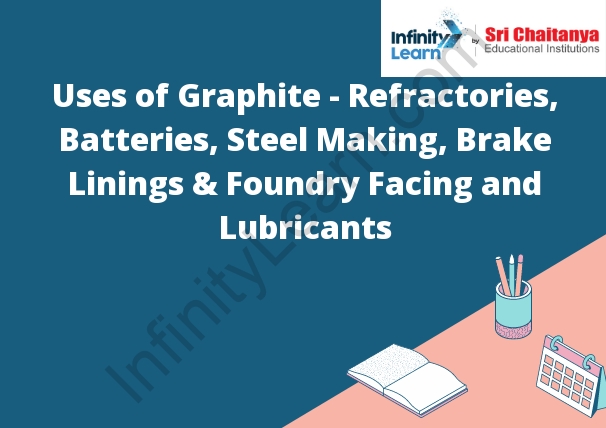Table of Contents
Important Uses of Graphite
Graphite has a variety of important uses, including in pencils, as an additive in steelmaking, as a lubricant, and in nuclear reactors.
Graphite is used in pencils because it is a good conductor of electricity and can create a thin film that is dark and non-reflective. This makes it ideal for writing and drawing.
Graphite is also used as an additive in steelmaking because it helps to prevent the steel from becoming brittle and increases its resistance to wear and tear.
Graphite is a good lubricant because it is slippery and can withstand high temperatures. This makes it ideal for use in machines and vehicles.
Finally, graphite is used in nuclear reactors because it is a good thermal conductor. This helps to keep the reactor cool.

Batteries
store energy in an electrochemical reaction between two metals, such as zinc and copper. The zinc oxidized, meaning it gives up electrons, while the copper reduced, meaning it accepts electrons. This reaction can reversed by running an electrical current through the battery, which causes the zinc and copper to recombine. The battery is then ready to store more energy.
Steelmaking Ironmaking, and Steelmaking
Ironmaking
The process of making iron from iron ore involves first crushing the ore to a fine powder and then heating it to a high temperature in a furnace. The furnace is a large, enclosed structure that uses intense heat to convert the ore into a molten metal. The molten metal then poured into molds called pigs and hogs, which used to create the final product, steel.
Steelmaking
The process of making steel from iron involves first melting the iron in a furnace and then adding other materials, such as carbon and alloying elements, to create the desired steel alloy. The molten steel then poured into molds to create the final product.
Brake linings
- Brake shoes
- drums
- Brake pads
- discs
Foundry facings and lubricants
- Cast iron
- Grey iron
- Ductile iron
- Malleable iron
- White iron
- Steel
- Bronze
- Brass
- Copper
- Lubricants
Graphene Technology
Graphene is a material consisting of a single layer of carbon atoms arranged in a hexagonal lattice. It is the thinnest material known, and about 100 times stronger than steel. It is also an excellent conductor of heat and electricity.
Graphene has a large number of potential applications in fields such as electronics, optics, and energy storage. It could used to create ultra-thin displays, energy-efficient transistors, and high-capacity batteries.
Crystalline Structure
- The crystalline structure of a material is the regular pattern of atoms, ions, or molecules that make up the material.
- The crystalline structure of a material can described by its crystal system. The six crystal systems are cubic, tetragonal, orthorhombic, monoclinic, triclinic, and hexagonal.
- The crystal structure of a material can also described by its crystal lattice. The crystal lattice is the repeating pattern of atoms, ions, or molecules in a crystal.
- The three most common crystal lattices are the cubic crystal lattice, the tetragonal crystal lattice, and the hexagonal crystal lattice.
For more visit Classification of Crystalline Solids – Molecular, Ionic, Covalent and Metallic
Question : What is graphite?
Answer : Graphite is a form of carbon that is commonly used as a lubricant and in many industrial applications. It is an allotrope of carbon, meaning it has the same chemical composition as diamond, but its structure is different.
Question : What are the properties of graphite?
Answer : Graphite is a very strong and durable material. It has a high melting point, is a good conductor of heat and electricity, and is chemically inert. It also has a low coefficient of friction, making it an ideal lubricant.
Question : How is graphite used?
Answer : Graphite is used in a wide variety of industrial applications, including lubrication, construction, and even in the production of batteries and fuel cells. It is also used in pencil lead, and in the manufacture of graphite sheets and rods.
Question : What are the advantages of using graphite?
Answer : Graphite is lightweight, strong, and durable. It is also a good conductor of heat and electricity, and has a low coefficient of friction. This makes it an ideal material for many industrial applications.
Question : What are the disadvantages of using graphite?
Answer : Graphite is a soft material, so it is susceptible to wear and tear. It is also expensive to produce and can be difficult to work with. Finally, graphite is a non-renewable resource, so it is important to use it wisely.








